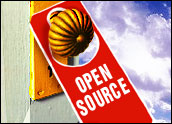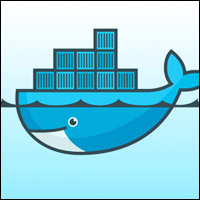
Sun Microsystems last week open sourced another chunk of Java development code, but some are criticizing the company for not declaring all of Java open source at once and under the same open source license.
Sun released source code for Java Mobile Edition development tools under the Common Development and Distribution License (CDDL). The firm claims it is working to ensure Java’s continued compatibility and to resolve licensing obligations within Java before it can be completely open sourced.
The company, which pledged significant portions of Java Standard Edition (SE) source code by the end of the year, has yet to indicate what license will govern the bulk of the Java code, otherwise known as the JDK. It has set up a portal to keep users posted of its plans and to invite developer feedback.
Bits and Pieces
Sun’s approach to opening Java by concentrating on different portions of the code at different times has been met with criticism by some industry watchers.
“For the marketplace to absorb it, it should come out fairly quickly, but more importantly, completely,” Interarbor Solutions Principal Analyst Dana Gardner told LinuxInsider. Open sourcing Java could increase Java innovation and ease of use if done right, he said. “The people in a position to do that — I’m not sure they have patience for the dribble-drabble open sourcing of Java.”
Developers are “cautiously optimistic” about the opening of the code, according to Sun Community Marketing Manager Rich Sands.
Sun’s primary consideration while it opens Java is retaining the programming language’s legendary write-once, run-anywhere compatibility, he told LinuxInsider.
Licensing Challenges
“We want to make sure we’re preserving that characteristic of the Java platform as we move to open source development,” he noted.
Sun’s move to open Java’s code is very complicated even if “kind of inevitable,” said Sands, considering the way the open source software industry has evolved. Sun is facing license-related challenges as it must choose open source license structures for its released Java code, as well as deal with the legacy licensing issues that come with a code base that has folded in code from a variety of other software over its lifecycle.
Sun is still on track to release “a significant portion” of JDK as open source by the end of the year. After that, a full, buildable JDK primarily under an open source license should be released in early 2007, according to Sands, who said Sun could not deal with all of the intellectual property encumbrances before then.
Clock Ticking
Gardner stressed the urgency of Java’s move to open source, which should be a full-fledged, open source release under the General Public License (GPL), in his opinion.
The company should choose the GPL over CDDL because it could mean Java’s incorporation into Linux distributions, he said.
“The time to compete and provide a strong alternative to .Net is now,” Gardner said, criticizing Sun’s continued pursuit of license fees from Java users and implementers.
Fear of Fragmentation
The two big factors keeping Sun from moving faster are the company’s fear of Java fragementation, and intellectual property encumbrances, Gartner Research Vice President Mark Driver told LinuxInsider.
Sun would do better to embrace fragmentation, which is actually a feature of open source software development, and partner with other players to further propel Java, he contended.
“Right now, they see all of these as threats, rather than partners,” Driver said.
He doubted that Sun would choose GPL for Java, but he also said Sun may be exaggerating the difficulty of the intellectual property issues, particularly given the company’s CDDL-licensed OpenSolaris operating system.
“If they can do Solaris, then Java would be relatively simple,” he said. “That’s a bit of an excuse.”


















































